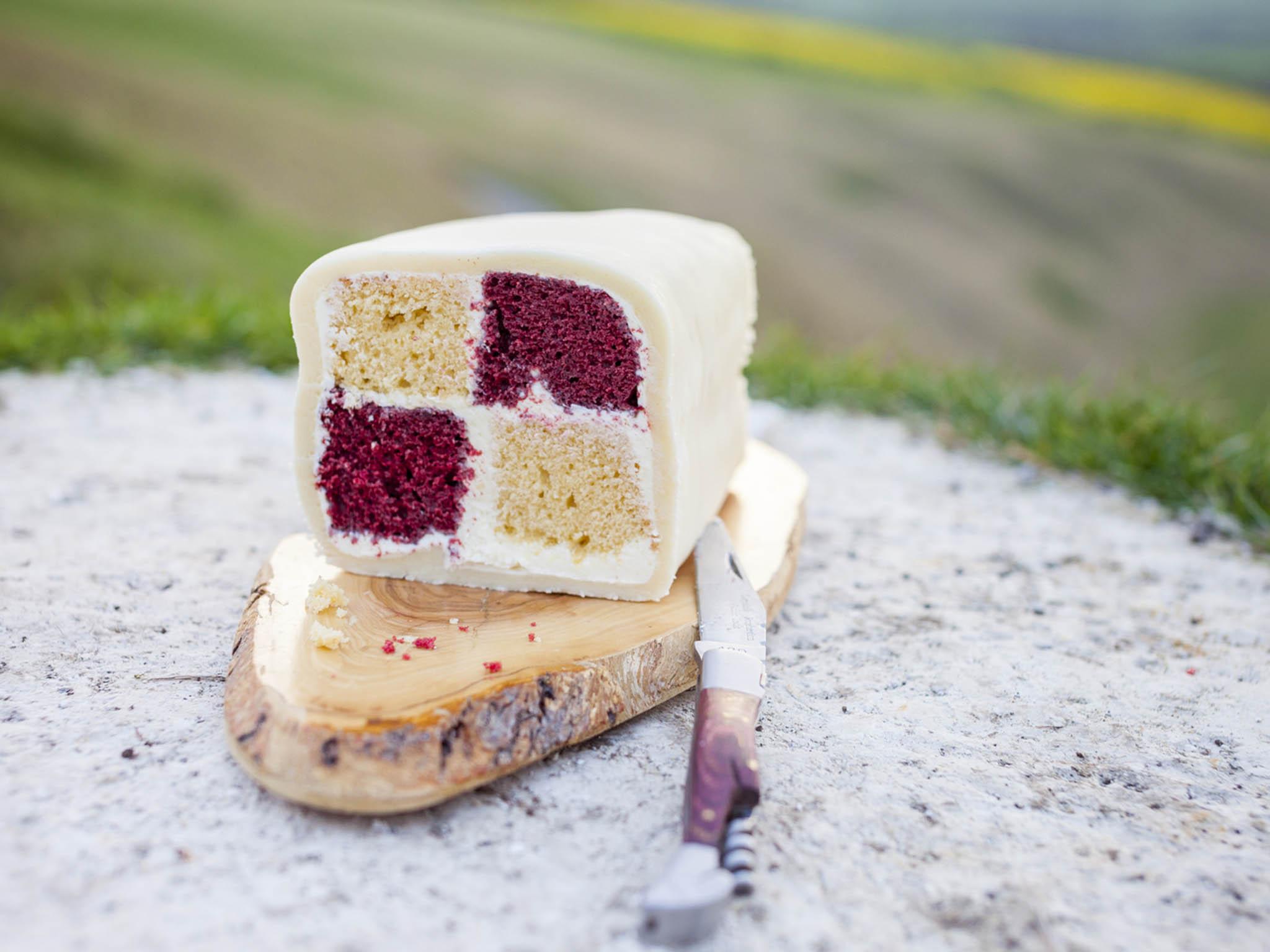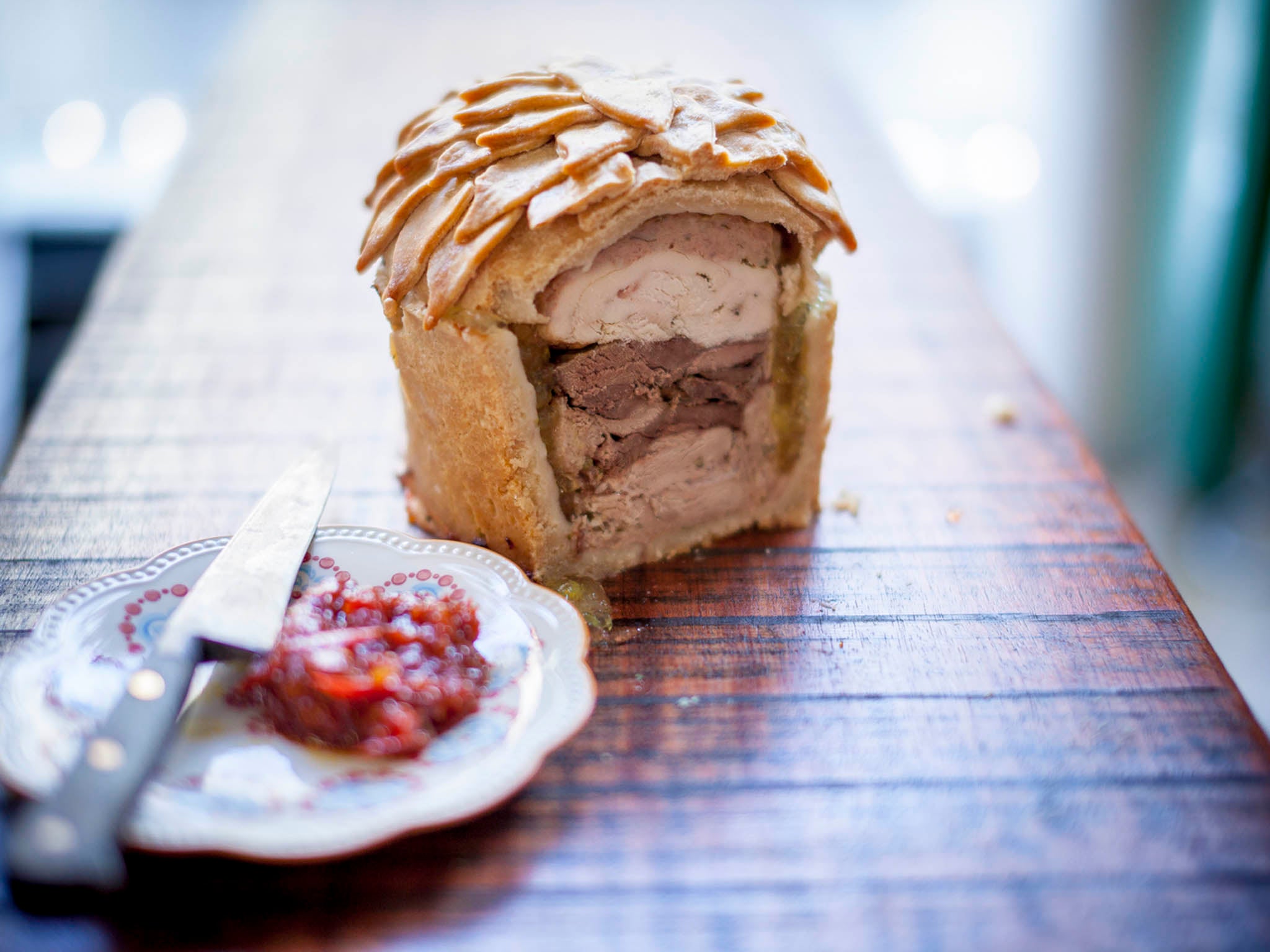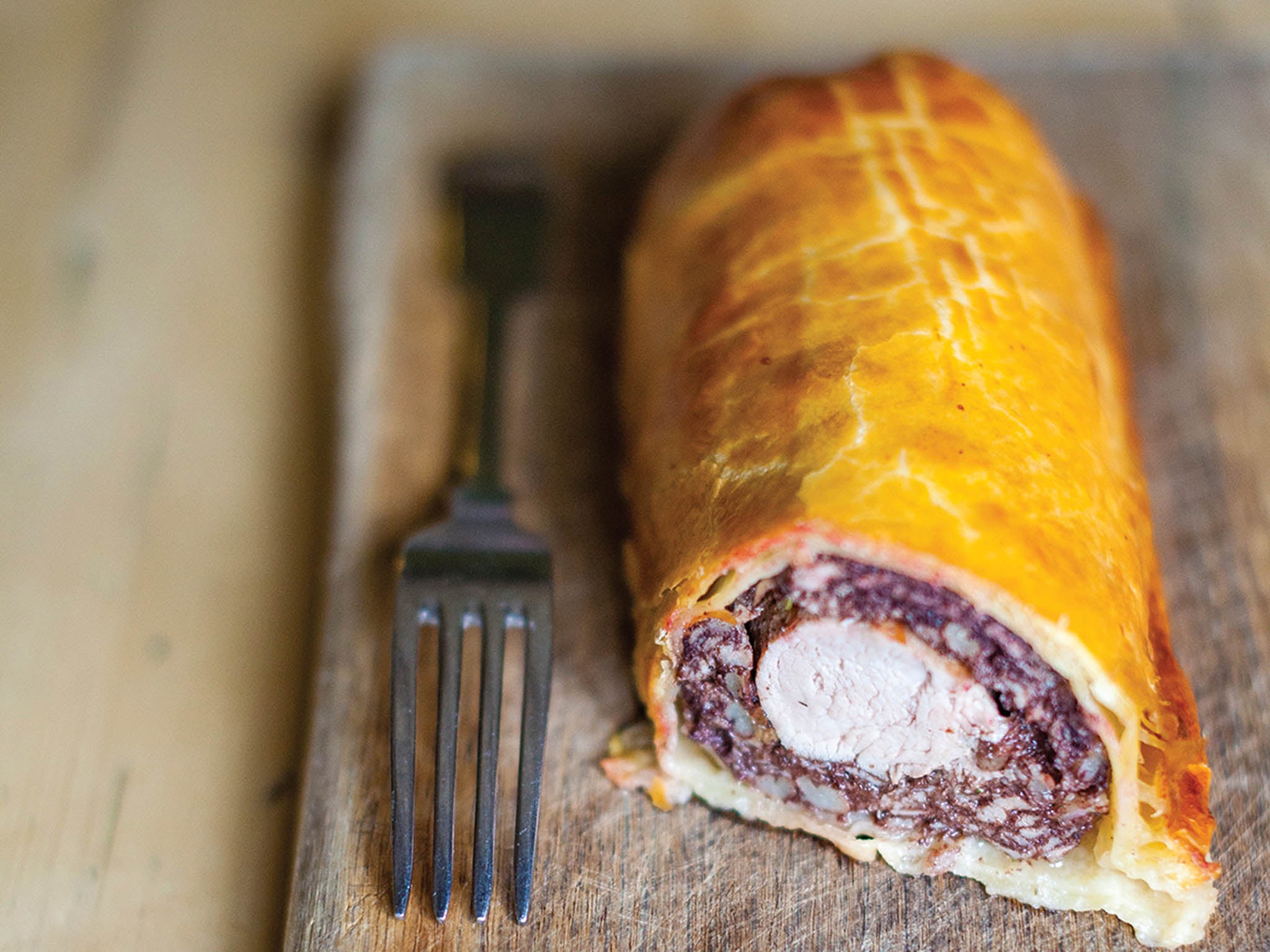St George's Day 2018 recipes: From battenberg cake to three bird pie
St George’s day is also known as the Feast of Saint George, so it seems only fair to celebrate the patron saint of England by, well, feasting with much-loved British classics

Your support helps us to tell the story
From reproductive rights to climate change to Big Tech, The Independent is on the ground when the story is developing. Whether it's investigating the financials of Elon Musk's pro-Trump PAC or producing our latest documentary, 'The A Word', which shines a light on the American women fighting for reproductive rights, we know how important it is to parse out the facts from the messaging.
At such a critical moment in US history, we need reporters on the ground. Your donation allows us to keep sending journalists to speak to both sides of the story.
The Independent is trusted by Americans across the entire political spectrum. And unlike many other quality news outlets, we choose not to lock Americans out of our reporting and analysis with paywalls. We believe quality journalism should be available to everyone, paid for by those who can afford it.
Your support makes all the difference.Gamey meats, beef cooked with a pink middle, pastry and sponges are stalwarts of British cuisine.
Extraordinaire pie-baker Lesley Holdship’s trio of chicken, quail and pigeon is coated in thick, rich and buttery pastry, while her brightly coloured cake that uses a check pattern, and red velvet cake instead of the traditional pink, is wrapped in natural marzipan. The battenberg cake has been around for a long time; early recipes were known as domino cake, neapolitan cake and even church window cake in the early 19th century.
For a modern twist on beef wellington, try Emily Watkins’ pork and black pudding wellington that uses homemade stock
Here’s three recipes to celebrate St George’s day.
Battenburg cake by Lesley Holdship
Prep: 30 minutes
Cooking: 40 minutes
Serves 8-10
For the vanilla cake
175g butter, softened
175g caster sugar
3 eggs
175g self raising flour
2 tsp vanilla extract
For the red velvet cake
200g plain flour
25g cocoa powder
1 tsp baking powder
100g butter, softened
175g caster sugar
2 eggs
1 tsp vanilla extract
1 tbsp red food colouring (bake stable)
150g buttermilk
1 tbsp lemon juice
1 tsp bicarbonate of soda
For the icing
100g butter
100g cream cheese
400g icing sugar, sifted
800g natural marzipan
Preheat the oven to 180C. Line 2 900g loaf tins. For the vanilla cake, cream the butter and sugar until light and smooth. Then add the eggs one at a time. Mix really well until everything is incorporated.
Stir in the flour and vanilla and then beat well until fluffy. Scrape into one of the tins and get the cake into the oven. Bake for 25-30 minutes until springy. Meanwhile, make the red velvet cake. First off, stir the flour, cocoa and baking powder together. Set aside.
Cream the butter and sugar together and then mix in the eggs one at a time. Next, stir in the vanilla and red colouring. Add the flour and cocoa mix along with the buttermilk and beat well to combine. Stir together the lemon juice and bicarbonate of soda, pour into the cake batter and mix well. Scrape the mixture into the second tin and bake for 25-30 minutes.
Let both cakes cool completely. Make the icing by beating together the butter and cream cheese, then add the icing sugar. This is likely to create big clouds of sugar dust, so go carefully at the offset!
Take each cake and slice off a hefty bit from the top and cut a sliver from the bottom and sides. Cut each cake in two, making sure each piece is equal in size. Around 5cm square is about right.
Sandwich two opposite colours together side by side with some of the icing, then spread more icing over the top. Place the remaining two pieces of cake on top, alternating the colours.
Dust your work surface with icing sugar and roll out the marzipan until it is about the size of an A4 piece of paper. Spread a rectangle of icing on to the marzipan, about the size of the cake.
Sit the cake on top and ice the very top. Carefully lift the marzipan up over the cake using the palm of your hand to support the sides and then press it to the cake. Trim any excess so the seam is not too bulky. Roll the cake over so the seam is on the bottom, then trim any excess marzipan from the ends for a neat finish.
It is ready to serve, in thick slices, preferably with a cup of tea!

Three bird pie by Lesley Holdship
Prep: 40 mins, plus cooling time
Cook: 3 hours
Serves 8-10
220g lard
400g sausage meat
2 tbsp fresh curly parsley, chopped
300g pigeon breast
300g quail meat
300g chicken fillet
1 tsp nutmeg
1 tsp ground mace
Sea salt and black pepper
550g plain flour
1 egg
300ml good chicken stock
3 gelatine leaves, soaked in water
Turn the oven on to 140C. Lightly grease your mould with a little of the lard – I used a Silverwood country pie mould. If you don’t have one, either use a 20cm springform cake tin or even a 2lb loaf tin.
Prepare your meats first so they are ready to go once you have made the hot water crust. Mix the sausage meat with the parsley, then thinly slice the breast meats. Keep them separate, but season each type with the spice and seasoning.
Next, melt the lard with 200ml water and a good pinch of salt until boiling. Remove from the heat and pour in the flour, mixing quickly using a round-bladed knife until it all comes together into a ball. Leave until it is just cool enough to handle. Cut the pastry in half, then cut one of the halves into 2 quarters. Take the larger half, lightly flour the work surface, and roll the pastry out a little just to get it started. Lay it in the mould and then use your fingertips to press the pastry up the sides, right to the top and over a little. The pastry needs to be around 1½cm thick.
Divide the sausage meat, putting a quarter aside, and press the larger part over the pastry base, easing it up around the sides until it reaches the top too. This will take a little while. Enjoy it for what it is, don’t rush! Next, layer in the breast meats, however you like – you can do stripes or blocks of colour, whatever you fancy! Really get the meat to the edges, pressing it all down with your hand. Get enough meat in the mould to dome above the top of the tin. Press the remaining sausage meat over the top.
Roll out 1 of the remaining pieces of pastry so it is just larger than the pie top, then gently transfer it to cover the meat. You can do this by rolling it on to a rolling pin and then unrolling it over the pie. Press the top and sides of the pastry together, then trim to leave a neat edge. Crimp if you fancy! Make a hole in the top. Roll out the remaining piece of pastry quite thinly, around half a cm, then cut it into leaves. Brush the back of each leaf with a little water and layer them over the top of the pie, covering it completely if you like and cover the hole, too.
Bake the pie for 2½ hours. Whisk the egg and brush the pie all over, making sure not to miss anywhere, then bake for another 20-30 mins. Warm the stock with the herbs and then add the drained gelatine, swirling the pan to dissolve. Leave it to go completely cold. Once the pie has had a while to rest, remove a couple of the leaves carefully from the centre of the lid and reassert the hole. Very carefully pour in some of the stock – it will depend on how compacted the meats are as to how much stock you will get in, you may not fit in much.
Chill the pie for a good 4 hours, or overnight would be good, in the tin. Don’t try to unhinge it too quickly, as the pastry may crack or break. Serve with big spoonfuls of chutney.

Pork and black pudding wellington by Emily Watkins
Prep: 25 mins
Cook: 25 mins
Serves 4
1 pork tenderloin
4 sprigs of thyme, leaves chopped
150g black pudding
150g minced pork
1 block of puff pastry
1 egg, beaten
For the pork and mustard sauce
2kg pork bones
1 pig trotter, split
2 large carrots, roughly chopped
1 large onion, roughly chopped
1 bay leaf
1 sprig sage
2 litres chicken stock
Dijon mustard
100g butter
Start by making the sauce. Roast the bones, trotter and vegetables in the oven at 180C, turning them every 20 mins until lovely and golden, then tip into a stock pot and cover with the chicken stock. Bring to the boil and simmer for about 2½ hours. Drain off all the stock into a new pan and reduce until almost syrupy. Whisk in mustard to taste, then the cold diced butter.
Trim the sinew from the pork tenderloin. Season and sear on all sides on a medium high heat. Take out of the pan and set aside to cool.
Now prepare the filling. Place the mince, black pudding and thyme into a bowl and use your hands to mix well. Pull out a piece of cling film and spread the mix across it. Place the tenderloin on top and use the cling film to help roll it across, enclosing the fillet in the meat mix. Tie into a sausage and then chill in the freezer for 20 mins to firm up.
Roll out the puff pastry to fit the tenderloin sausage. Unwrap the pork from the cling film and place it on top of the pastry. Wrap the pastry around the pork, using some of the beaten egg to seal it. Glaze the wellington with the remaining egg wash. Place in the fridge to chill for at least half an hour.
Place in a pre-heated oven at 200C, and bake for 25 minutes until golden brown. Serve with the sauce and some fresh greens, such as savoy cabbage finished with some butter.
Recipes from boroughmarket.org.uk. Visit tomorrow for the market's St George's Day event (boroughmarket.org.uk/events/celebrate-the-feast-of-st-george)
Join our commenting forum
Join thought-provoking conversations, follow other Independent readers and see their replies
Comments